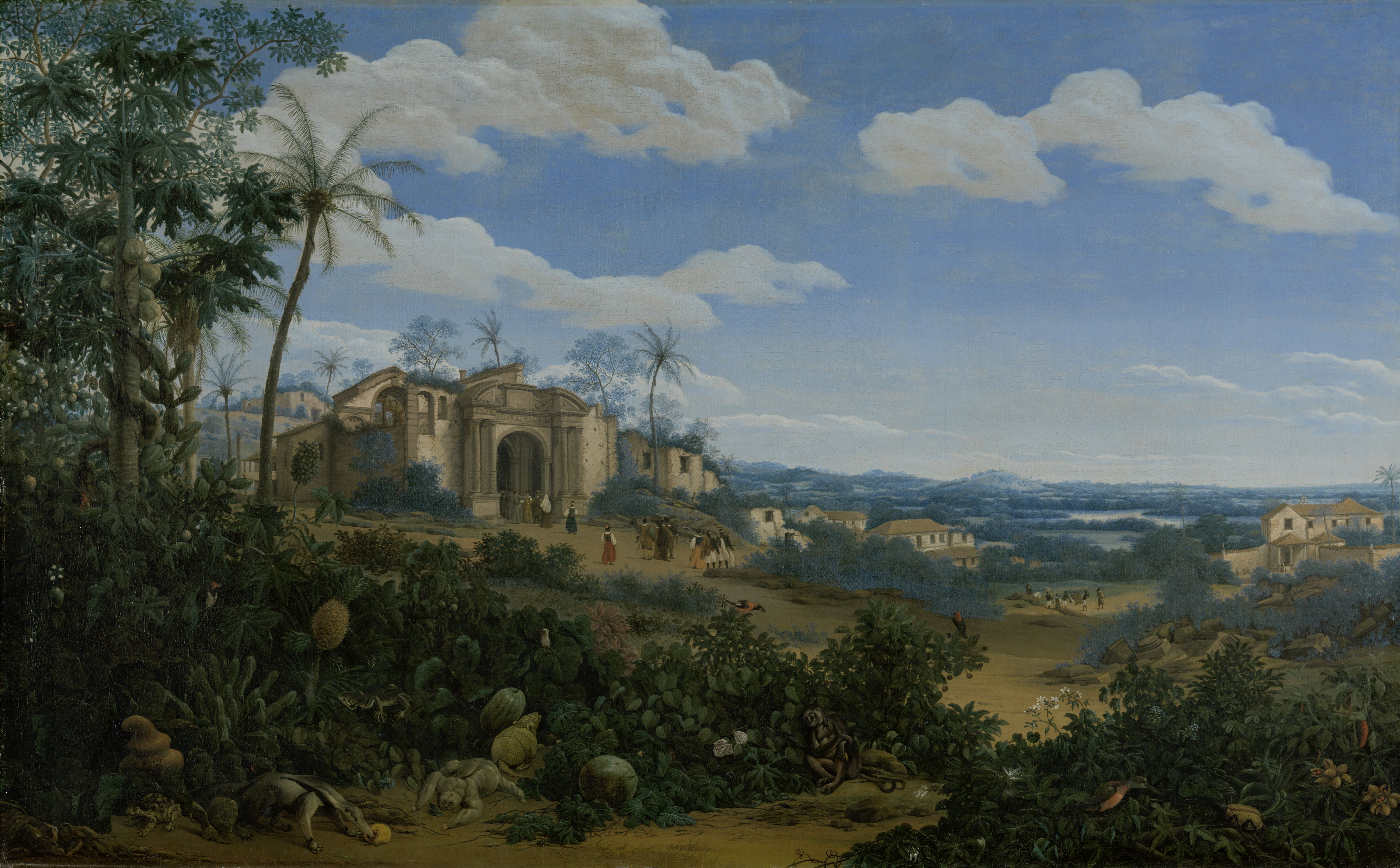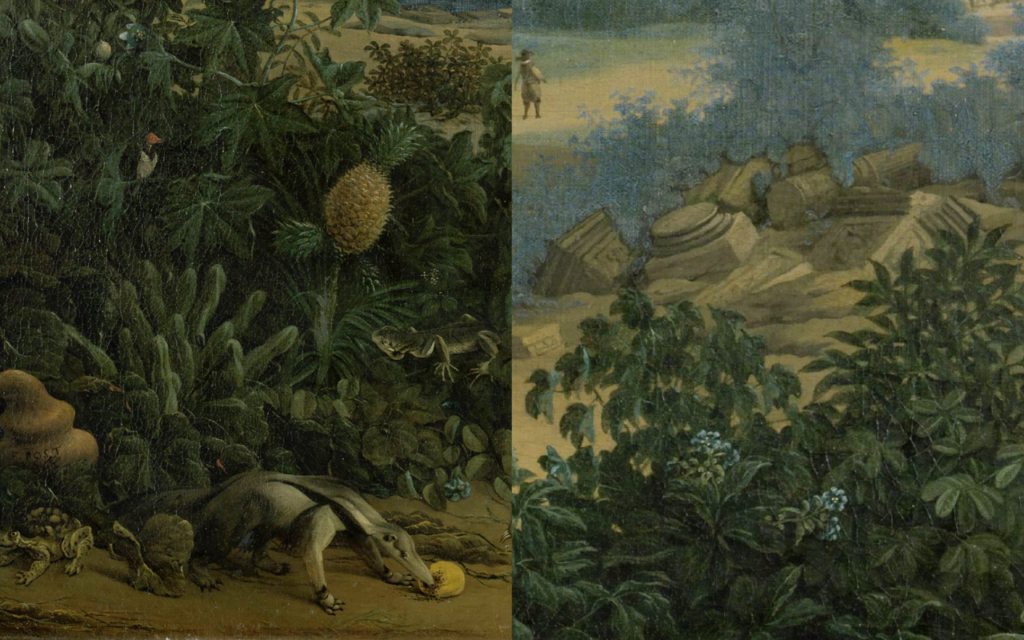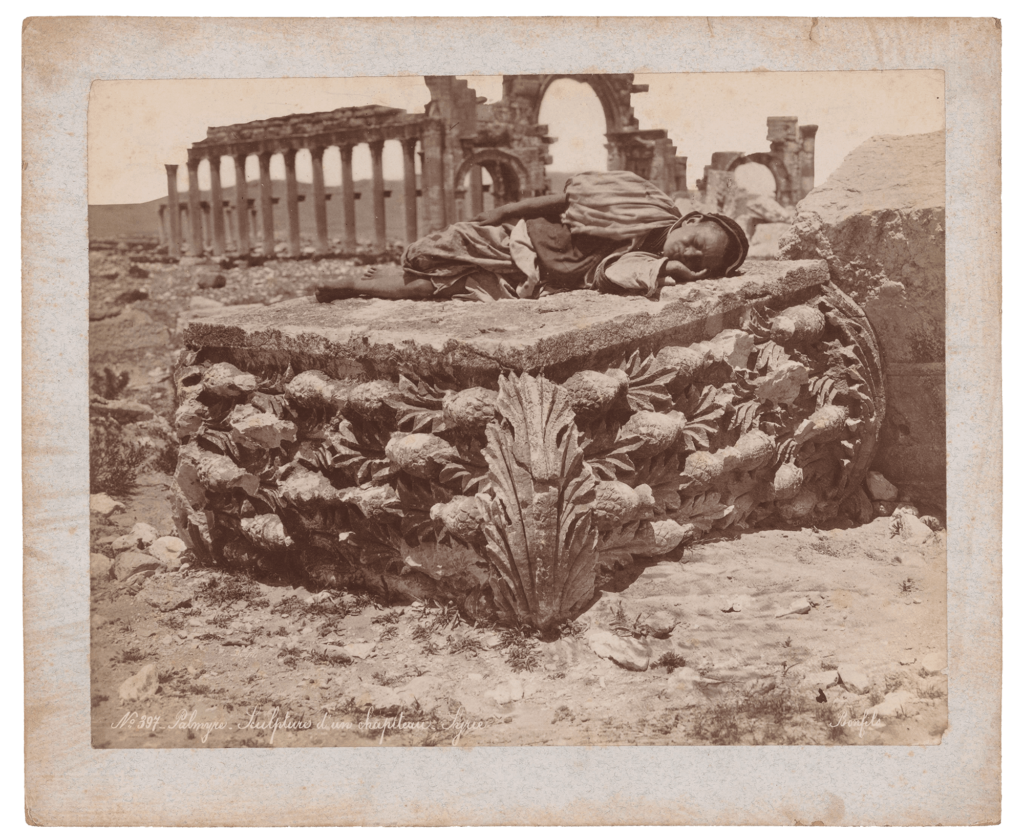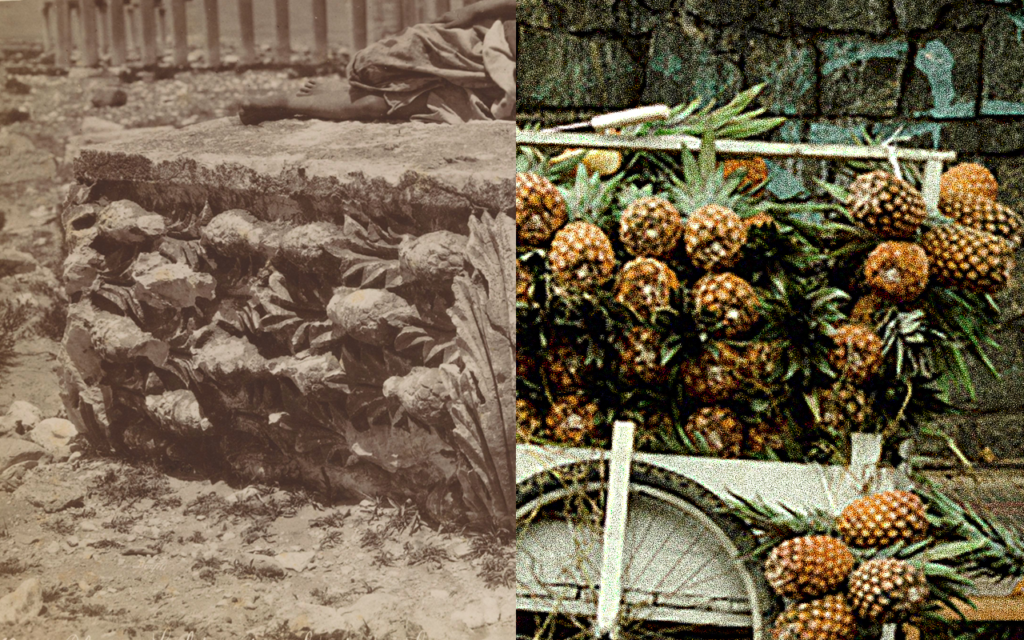Note: from this first line on we begin to call pineapples abacaxi, for pines and apples are something else entirely.

When Frans Post (1612-1680) arrived in Recife in 1637, he came as part of a mission organised under the rule of Maurice of Nassau (1604-1679), who had then been recently appointed governor of the Dutch possessions in Brazil. The disputes between the Dutch, the Spanish and the Portuguese led to a series of fires and the damage of some of the existing structures.
Post came with the purpose of documenting the local landscape and its inhabitants and, upon his arrival, made several sketches of the ruined Cathedral of Olinda, but it wasn’t until 1662 that he actually painted View of Olinda, from his studio in Haarlem, The Netherlands. The painting was purchased by the Rijksmuseum Amsterdam in 1881 and is presently displayed on room 2.10, filed under the keyword abacaxi.
Looking at View of Olinda, we see that Post brings to the foreground an incongruent parade of local flora and fauna that, painted from his studio with considerable distance in time and space, feel strangely out of proportion.
Still, it is the rendering of the background, with the supposed ruined remains of the Cathedral represented very much in accordance with the ideals of archaeological landscaping, so much in vogue in Europe at the time due to the then recent discoveries of several ancient sites, that tell us something about the place of projection of all sorts of fantasies of nostalgia that the abacaxi, along with the whole tropical fauna and flora came to occupy, maybe only paralleling with the nostalgia of the classical past.

At this point we understand that the abacaxi became, from its entry in the Old World, a sort of an empty signifier, readymade to receive any kind of projections and meanings attributed by the highest ranks of european aristocracy, whose urge to identify so obsessively with something might stem from the very lack of a full identity in first place. There is never any control of the uses that are made of a given signifier by the agents in power and the people, and here it is even amusing to realize that we could talk about a wild logic in the appropriation of these empty signifiers.
* * *

Exploring further the Rijksmuseum’s archive, another image, also filed under abacaxi, catches my attention: a photograph, depicting a boy fast asleep on top of a ruined column capital, profusely decorated with dozens of abacaxi-looking fruits and cornered by rather big accantus leaves. This photograph was made by Félix Bonfils, sometime between 1860 and 1890, in the archaeological site of Palmyra.
Here there is yet another element coming into play: as we already know the abacaxi did not reach the old world until the beginning of the 16th century. Palmyra, located in the Homs governorate, present day Syria was subject of the Roman empire in the first century AD, the period in which the aforementioned structure was built. So if we are to admit that the past can be subject of a retroactive change upon the occurrence of a speech act, this solely mistaken archival gesture performed by the museum staff, probably driven by a swift and rather superficial reading of the image, would be a perfect object of study. Even though what we see here, carved on the stone, looking as boxes filled with abacaxis perfectly lined as if on the stall of a fruit market, might in reality be referring to any other plant, it invites us to reflect about the nature of our own material culture.

Looking at the main documented traditions of Brazilian prehistoric visual manifestations, I can’t help to conclude that plants, fruits and vegetables alike were barely a matter of concern for those who were registering their thoughts, fears, hopes, wishes, rituals on the plateaus, shelters, caves and other lithic structures. These early paintings, reliefs and objects often bring motifs ranging from animals, anthropomorphic figures in a variety of situations, stars and other cosmological visions, but, again, it is rare to even find a tree. It seems that the fruits, as edgy, bold, fierce looking, wonderfully scented, healing, poisonous or strange as they would have been, had such a direct and strong connection with the practical life, that their value and importance were just part of a set of ideas on how life should just be, nothing more, nothing less.
We are talking about a place where nothing seems to really bear testimony of the precolonial past; a place where the tropical land used to consume everything, nature has eaten time and mankind has eaten nature and nothing is left of any of it. And those in power in Brazil (now, but not only) strive to further extinguish what remains and defend their own monuments: those dedicated to colonisers, murderers and looters of the land, the soil and all there was (even abacaxi).